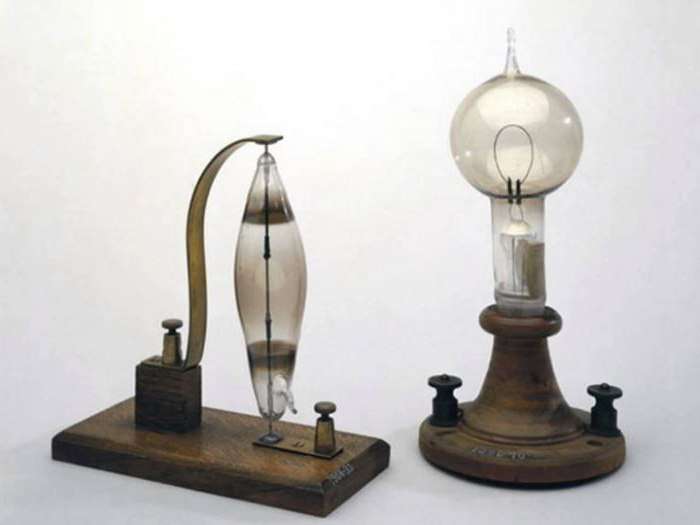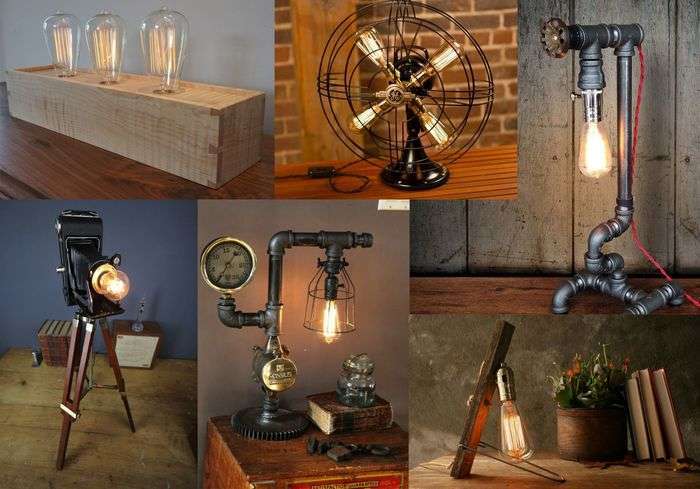Edison lamp: history, principle of operation, characteristics
The American inventor Thomas Edison developed one of the first commercially successful ways of lighting, using an electric incandescent lamp. Now it is the most popular way to illuminate any premises, which is in great demand among the entire population. The invention became in history the brightest technical achievement of the 20th century, just like telephones and computers are in our time.
The history of the Edison lamp
In the 20th century, a spherical flask containing a luminous spiral inside had no competitors. In each house there were about a dozen such inventions, and each of them had a different power. Edison in 1880 managed to bring the burning time of a carbon filament to 50 hours, which was several times higher than the samples created earlier by other inventors, which could burn out after five hours.
However, even before Thomas, dozens of scientists had already brought out a model of a light bulb, their different shapes and sizes, and bamboo, platinum or carbon filaments were located inside. It was clear that for the correct operation of the device, a rod was needed, which would be in a vacuum and connected to an electric current. But it is Edison who is the creator of such a lighting device, since the main role was not in the very idea of u200bu200bcreation, but in developing a simplification of this mechanism, lower prices and general availability.
After such a breakthrough, the lighting on the streets was replaced from gas to electric, and the new lanterns were given a name in honor of the inventor himself. Thomas tirelessly worked to reduce the cost of his invention and was able to bring prices so low that it became simply unprofitable to use candles.
The principle of operation of the Edison lamp
Each device has the same composition. In almost all cases, incandescent lamps are used to transform electric current into light energy. All devices contain:
Each element performs its function, without the work of which light cannot be obtained.
Principle of operation: strong heating of the filament with the help of a stream of charged particles. In order for the human eye to be able to see the radiation, the temperature of the object must be at least 580 degrees so-called. crane radiation, and in order for the lighting to be powerful enough to cover as large an area as possible, this value must be exceeded by 5-6 times.
Tungsten contains the highest temperature of metals, therefore tungsten wire is the heating body. To occupy a smaller volume, it is folded into a spiral.
To prevent tungsten from oxidizing, the heating body is placed in a sealed glass vessel, which is filled with an inert gas. Usually, this is argon, but sometimes it can be krypton or nitrogen. In a state of constant heating, tungsten evaporates over time, but the inert gas creates pressure that prevents this, due to which the light bulb lasts longer.
This video shows how to make a cool unusual and unique chandelier or lamp with your own hands using an Edison lamp.
Edison lamp power
There is a huge variety of lamps for lighting different areas: the larger it is, the more powerful the light source should be. The main ones are several types:
Edison Incandescent Light Bulb
The light source of each light bulb is a filament of tungsten, which can be arranged in a wide variety of shapes.
Main characteristics:
The tungsten filament can also have a different shape, for example:
Each Edison invention is divided into classes and the number of tungsten filaments. This indicator affects the price, but does not affect the power. Some of the bulbs are produced with glasses that have a delicate shade of amber, but there are also ways to intersperse with silver or golden colors.




